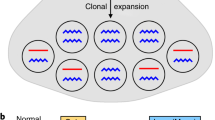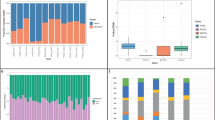Abstract
To establish whether loss of heterozygosity (LOH) for chromosome 16q in Wilms' tumours confers an adverse prognosis, DNA from 40 Wilms' tumour/normal pairs were analysed using highly polymorphic microsatellite markers along the length of 16q. Fifteen per cent of tumours showed LOH for 16q. Although the common region of allele loss spanned the 16q24-qter region, a second distinct region of LOH was identified in 16q21. Five out of six tumours showing LOH were either (1) high stage or (2) low stage with unfavourable histology. In addition, there was a higher mortality rate in patients showing LOH for 16q than those that did not. These data strongly support the suggestion that LOH for 16q is associated with an adverse prognosis.
This is a preview of subscription content, access via your institution
Access options
Subscribe to this journal
Receive 24 print issues and online access
$259.00 per year
only $10.79 per issue
Buy this article
- Purchase on Springer Link
- Instant access to full article PDF
Prices may be subject to local taxes which are calculated during checkout
Similar content being viewed by others
Author information
Authors and Affiliations
Rights and permissions
About this article
Cite this article
Grundy, R., Pritchard, J., Scambler, P. et al. Loss of heterozygosity on chromosome 16 in sporadic Wilms' tumour. Br J Cancer 78, 1181–1187 (1998). https://doi.org/10.1038/bjc.1998.651
Issue Date:
DOI: https://doi.org/10.1038/bjc.1998.651
This article is cited by
-
Identification of the potential novel biomarkers as susceptibility gene for Wilms tumor
BMC Cancer (2021)
-
Loss of heterozygosity and SOSTDC1 in adult and pediatric renal tumors
Journal of Experimental & Clinical Cancer Research (2010)
-
Wilms tumour: prognostic factors, staging, therapy and late effects
Pediatric Radiology (2008)
-
Sporadic human renal tumors display frequent allelic imbalances and novel mutations of the HRPT2 gene
Oncogene (2007)
-
Rapid detection of allelic losses in brain tumours using microsatellite repeat markers and high-performance liquid chromatography
British Journal of Cancer (2003)



